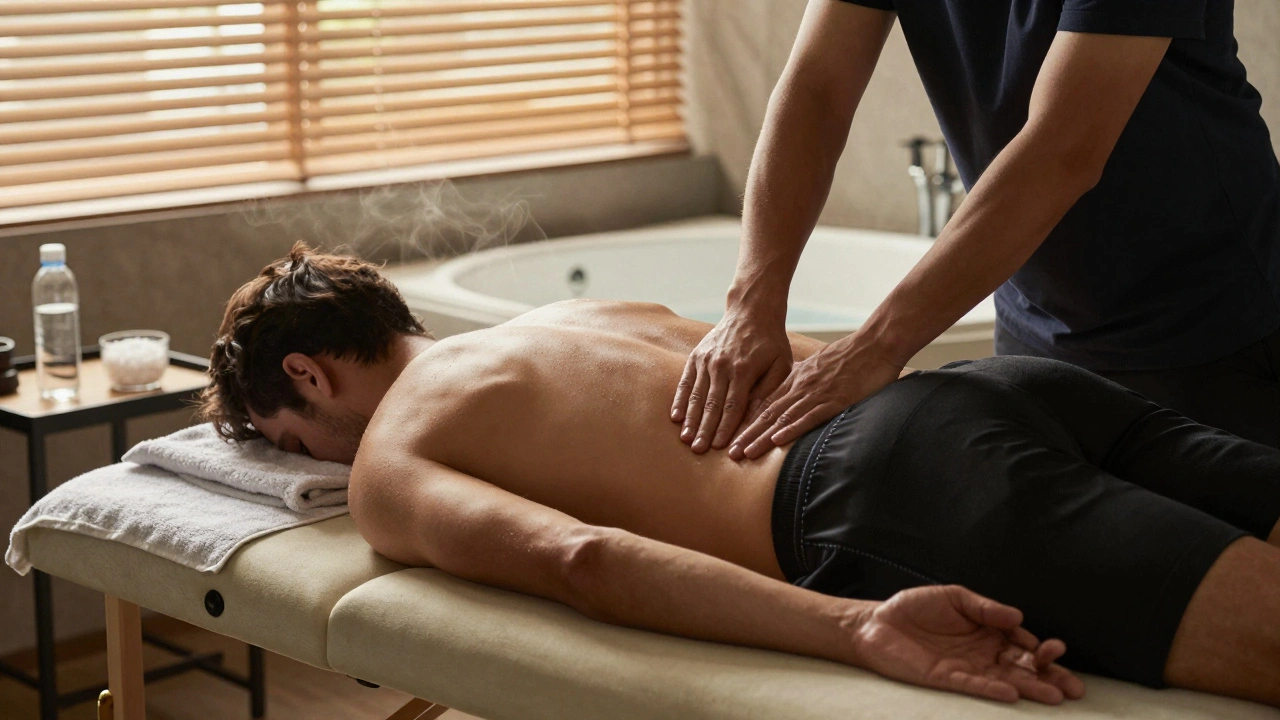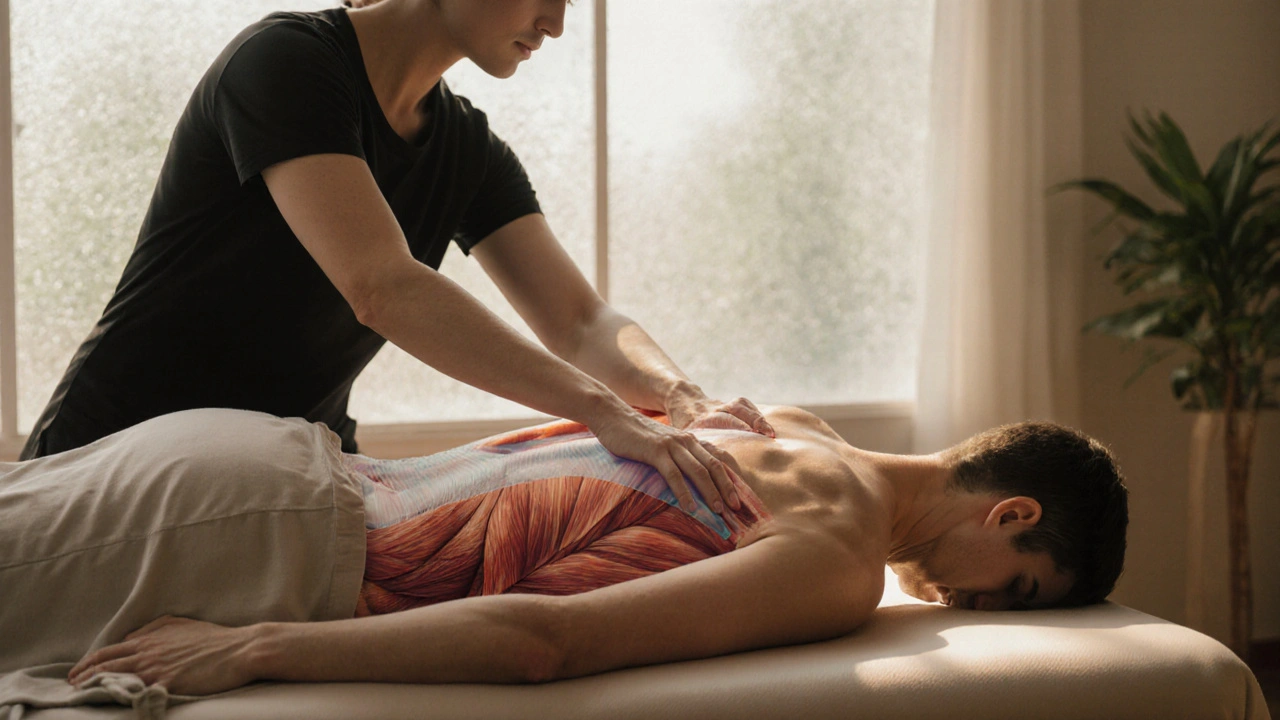Muscle Recovery Made Simple with the Right Massage
If you’re sore after a workout or feeling tight from a long day, a good massage can be the shortcut you need. It isn’t just about feeling relaxed – the right pressure, strokes, and techniques actually push blood, oxygen, and nutrients back into tired muscles so they heal faster.
Most people think any massage will do, but certain styles hit the recovery sweet spot. Below you’ll see which ones are worth trying and how to get the most out of each session.
What Types of Massage Actually Speed Up Recovery?
Deep tissue massage is the go‑to for athletes and anyone with stubborn knots. The therapist works into the deeper layers of muscle, breaking up adhesions that keep blood from flowing. You’ll feel some pressure, but the payoff is less soreness the next day.
Sports massage blends stretches, trigger‑point work, and light percussion. It’s designed to prepare muscles before activity and calm them afterward. If you book a session within 24‑48 hours of a tough training day, you’ll notice less stiffness.
Lymphatic drainage massage might sound fancy, but it’s basically a gentle, rhythmic massage that nudges fluid out of swollen areas. It reduces inflammation and speeds up toxin removal, which is a big help after intense cardio.
Hot stone massage adds warmth to the mix. The heated stones relax tight tissue, allowing deeper work without cranking up the pressure. The heat also dilates blood vessels, boosting circulation for quicker repair.
How to Prepare for a Recovery Session
Show up hydrated. Water helps your body transport nutrients and flush out waste, so drink a glass before you walk in. Skipping a meal isn’t necessary, but a light snack with protein can give your muscles extra building blocks.
Communicate clearly with your therapist. Tell them where it hurts, how much pressure you can handle, and if you have any injuries. A quick chat at the start saves time and shapes the session to your needs.
Stretch a bit after the massage. The muscles are warm and more pliable, so a few gentle moves lock in the benefits and prevent the tension from snapping back.
Finally, give yourself 30‑60 minutes of rest after the session. Your body is still processing the increased blood flow, and a short recovery window lets the healing effects settle in.
London has plenty of specialists who focus on muscle recovery. Whether you’re after a deep tissue expert, a lymphatic drainage pro, or a therapist who brings the hot stone experience to your door, the city’s outcall and studio options cover every style.
Remember, the best recovery plan mixes massage with good sleep, balanced nutrition, and smart training. Use the right massage as a tool, not a crutch, and you’ll notice stronger, less sore muscles in weeks, not months.
Full Body Massage for Athletes: Recovery and Performance Enhancement
Full body massage for athletes boosts recovery, reduces soreness, and enhances performance by improving circulation, releasing muscle tension, and resetting the nervous system. Learn when, how often, and why it works.
VIEW MOREDeep Tissue Massage Benefits: Boost Your Body’s Healing Naturally
Explore how deep tissue massage triggers natural healing, boosts circulation, reduces stress hormones, and speeds muscle recovery for lasting wellness.
VIEW MORESports Massage London: The Best Guide for Athletes in 2025
Discover everything about sports massage in London for athletes: benefits, top techniques, what to expect, and tips for finding the best therapists.
VIEW MOREDeep Tissue Massage: Revitalize Your Body and Mind
Curious how deep tissue massage can help you recover and recharge? This article breaks down what deep tissue massage is, how it works, and why it’s a favorite for people dealing with muscle tension and stress. Learn about the key benefits, what happens in a session, and tips for finding the best therapist near you. We’ll also clear up common questions—so you can walk in knowing exactly what to expect. Whether you’re an athlete or just feeling stiff from sitting all day, this guide’s got answers.
VIEW MORE



